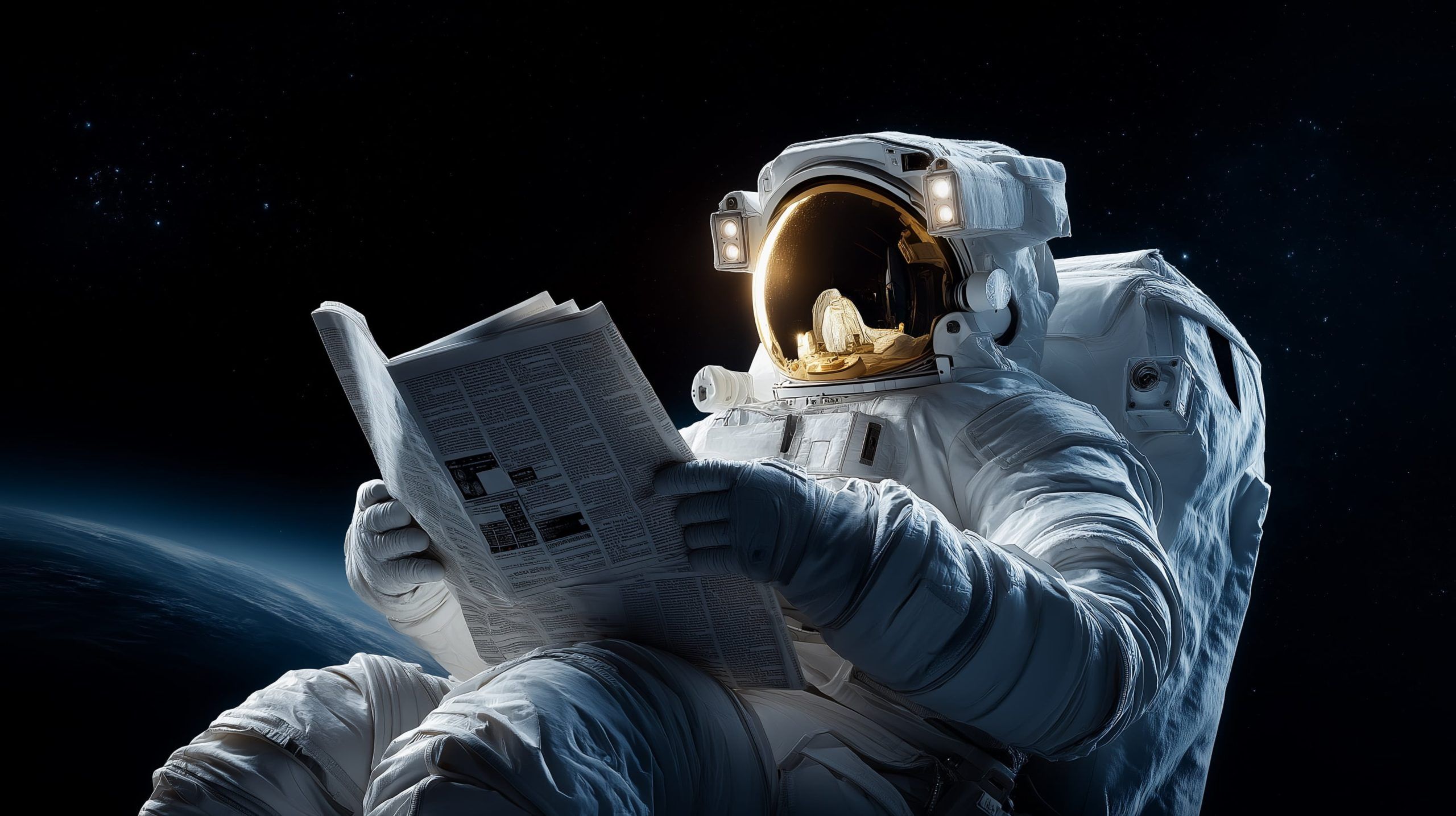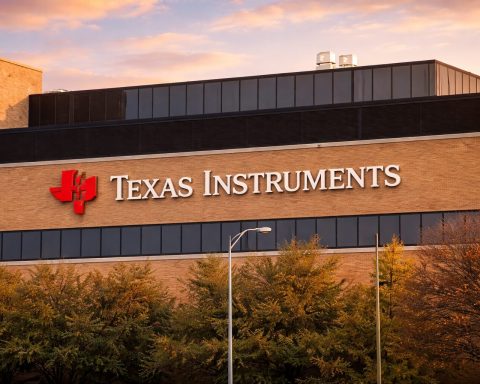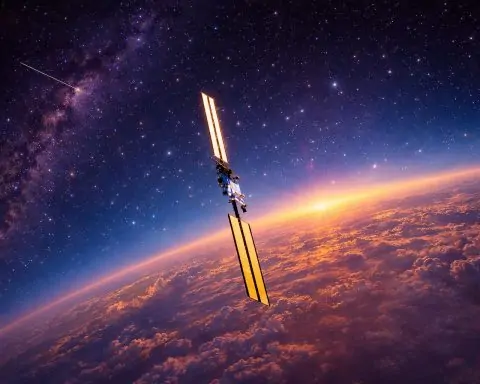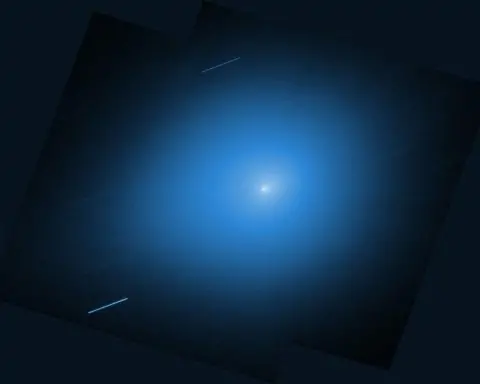Rocket Launches and Mission Highlights
- SpaceX Reboosts the ISS: In the early hours of Aug. 24, SpaceX’s 33rd Cargo Dragon mission (CRS-33) blasted off from Cape Canaveral carrying over 5,000 pounds of supplies – and a special new “boost” module to raise the International Space Station’s orbit [1] [2]. This uncrewed Dragon will stay docked for nearly five months (a first for a cargo mission) to periodically fire two Draco engines in its trunk, relieving pressure on Russia’s Progress spacecraft for station-keeping [3] [4]. “The hardware in the trunk contains an independent propellant system…to fuel two Draco engines,” explained Bill Spetch of NASA’s ISS Program, noting the boosts will help maintain altitude as partners prepare to deorbit the ISS around 2030 [5] [6]. Liftoff occurred at 2:45 a.m. EDT Sunday, and Dragon’s arrival marks the 50th SpaceX Dragon vehicle to reach the ISS [7]. SpaceX’s Sarah Walker highlighted that 33 CRS missions so far have delivered “well over 300,000 pounds of cargo…and over 1,000 science projects” to the orbiting lab [8] – dramatically expanding research and keeping astronauts supplied.
- Rocket Lab’s 70th Mission – Shrouded in Secrecy: On Aug. 23, Rocket Lab achieved a major milestone with the 70th launch of its small Electron rocket, cheekily nicknamed “Live, Laugh, Launch.” The booster lifted off from New Zealand at 6:42 p.m. EDT, successfully placing five satellites into a 413-mile orbit for a confidential commercial client [9] [10]. Little is known about the payloads – this was the second of two covert launches for the same customer – and Rocket Lab even ended its live webcast just 10 minutes after liftoff at the client’s request [11] [12]. “Live, Laugh, Launch” was Electron’s 12th flight of 2025 and underscores Rocket Lab’s rapid cadence [13]. The company touted Electron as “the world’s most frequently launched small-lift rocket,” and is already preparing to debut its larger Neutron vehicle from a new Virginia pad later this year [14].
- Blue Origin Scrubs New Shepard Launch: Jeff Bezos’ Blue Origin had aimed to fly its 35th New Shepard suborbital mission on Aug. 23 from West Texas, carrying over 40 research and education payloads, but the launch was called off last-minute due to a booster avionics issue [15]. “We are scrubbing today’s NS-35 launch. The team encountered an issue related to the booster’s avionics,” the company announced, adding that a new target date will be set [16]. This uncrewed flight, when it happens, will loft experiments ranging from NASA-sponsored student projects (TechRise Challenge) to university tech demos, and would mark Blue Origin’s 200th payload flown to space [17]. The reusable RSS H.G. Wells capsule is expected to provide a few minutes of weightlessness for the experiments once the mission proceeds [18] [19].
- Starship Test Flight Imminent: Meanwhile in Texas, SpaceX prepared to attempt the 10th test flight of its massive Starship system as soon as Sunday Aug. 24. The Super Heavy booster was rolled to the Boca Chica pad with a launch window at 7:30 p.m. EDT (6:30 p.m. local) [20]. This test – coming after a “string of recent failures” in Starship’s development [21] – aims to send the Starship upper stage nearly halfway around the world, then splash down near the Indian Ocean. SpaceX hopes to finally achieve a fully successful flight after several Starship prototypes were lost during earlier attempts this year [22] [23]. Observers are keenly watching whether Flight 10 can reach orbit and survive re-entry, a critical step toward SpaceX’s vision of fully reusable, Mars-capable rockets. “The world’s most powerful launch vehicle” has faced intense regulatory scrutiny after past explosions, but Musk’s team says they’ve addressed issues and are “gearing up for the next test” with FAA clearance in hand [24] [25]. (Update: As of Aug. 24, the launch remained on standby pending final checks.)
Space Industry and Global Policy Developments
- South Africa Poised to Welcome Starlink: A significant regulatory shift is underway in South Africa that could clear the way for SpaceX’s Starlink internet service. The country’s equity laws have barred Starlink until now, requiring 30% local Black ownership of telecom providers – a rule Elon Musk blasted as “openly racist” for effectively blocking his service [26]. But as of late August, South Africa’s communications minister proposed allowing “equity-equivalent” investments instead of an ownership stake [27]. Over 19,000 public comments are being weighed on this rule change [28]. SpaceX supports the reform and has signaled it would invest in local infrastructure or digital inclusion programs to meet the spirit of the law rather than give up shares [29]. Proponents argue Starlink could be a game-changer for rural connectivity [30] in Africa’s most developed economy, which notably still lacks Starlink coverage while 17 other African nations have it [31]. The proposal has sparked controversy – critics accuse officials of “rewriting laws to favor a foreign billionaire” at the expense of empowerment principles [32]. The final decision, expected soon, will determine if South Africans gain access to high-speed satellite internet and could set a precedent for balancing investment vs. ownership in telecom policy [33].
- Automaker Geely Launches Satellites: In a sign of the new players entering orbit, China’s Geely – better known as a car manufacturer – successfully launched 11 satellites this month via its aerospace arm Geespace, expanding its low-Earth orbit constellation from 30 to 41 satellites [34]. By year’s end Geely aims for 72 satellites in orbit, achieving near-global coverage (excluding polar regions) for its network [35]. Geespace provides IoT and connectivity services through telecom partners in 20+ countries, but critically these satellites also beam data to Geely’s vehicles: the company is integrating satellite connectivity into advanced driver-assistance systems for its cars [36] [37]. This makes Geely the world’s first automaker with a dedicated satellite broadband constellation. “Geely has the reach, the capital, and the capability to put satellites into orbit,” notes Tu Le of Sino Auto Insights, calling the space venture a long-term strategy to become a global player [38]. The move underscores how non-traditional entrants – from carmakers to tech giants – are entering the space sector to secure connectivity and data services for their core businesses.
- Satellite Mega-Constellation Race: The past 48 hours of news highlight a “true satellite boom” in 2025, as multiple nations and companies race to deploy broadband constellations. SpaceX’s Starlink continues its breakneck pace – averaging hundreds of new satellites per month – but China is aggressively ramping up its own mega-constellations. In August, Chinese rocket launches from Wenchang and Taiyuan added new satellites to the planned “Guowang” network, part of Beijing’s effort to rival Starlink with tens of thousands of satellites for global internet coverage [39] [40]. Backed by both state and private funding, these Chinese constellations (including one called Qianfan) aim to boost China’s digital economy and reduce reliance on foreign networks [41]. Meanwhile, Amazon’s Project Kuiper is preparing to deploy a 3,200-satellite fleet following test sats in 2023, and UK/India-backed OneWeb is already providing service with its ~618 satellites in orbit [42]. The result is an unprecedented surge in orbital activity: the number of active satellites has jumped 30% in the first half of 2025 alone, with projections of ~13,000 active satellites by year-end [43]. SpaceX’s launch cadence is smashing records – 87 Falcon 9 launches in the first 7 months of 2025, putting up 1,320 payloads (nearly 1,000 of them Starlinks) in that span [44]. While this promises better global connectivity and competition (driving down costs), it also raises challenges around crowded orbits and debris. International regulators face mounting pressure to coordinate on spectrum and orbital slots as Starlink, Guowang, Kuiper, and others all vie for space [45]. For consumers and governments, however, the satellite internet race is largely positive – heralding faster broadband to remote areas and more resilient communications worldwide.
- U.S. Eases Commercial Space Rules: In Washington, the U.S. government has been moving to streamline regulations and boost private spaceflight. Earlier in August, President Donald Trump signed an executive order directing agencies to simplify licensing for launches and spectrum use – effectively easing rules for commercial space companies [46]. This follows a pro-space pledge in his inaugural address to send “astronauts to Mars” and is part of a broader push to cut red tape in the space sector. Efforts are underway to create a one-stop “single window” for space approvals and modernize old policies [47]. Industry leaders have applauded the reforms, saying clearer rules and faster permitting are “critical to innovation” in the new space economy [48]. Beyond the U.S., other nations are likewise updating space laws – from export controls to debris mitigation – as they recognize that fostering public-private partnerships is key to advancing both commercial and exploration goals [49]. These policy shifts, alongside funding boosts (U.S. lawmakers in July approved nearly $10 billion extra through 2032 for NASA’s Artemis moon program [50] [51]), signal broad political support for accelerating space development worldwide.
Scientific Breakthroughs and Space Research
- Asteroid Sample Contains Stardust Older Than the Sun: Scientists revealed a groundbreaking discovery from NASA’s OSIRIS-REx mission on Aug. 24 – the dust collected from asteroid Bennu contains “presolar grains,” literally ancient stardust that formed over 4.5 billion years ago, before our Sun existed [52] [53]. These tiny grains, identified in the first detailed analysis of the Bennu samples, likely condensed around dying stars and survived through the birth of our solar system, making them older than any rock on Earth. “We’re looking at a unique snapshot of the outer solar system at the birth of our Sun,” said University of Arizona’s Jessica Barnes, a co-author of the study [54] [55]. Along with the exotic presolar minerals, Bennu’s material showed organic molecules and water-altered compounds, offering an unprecedented window into the primordial building blocks of planets [56] [57]. Researchers noted Bennu’s parent body likely formed in the outer solar system (perhaps beyond Saturn), consistent with the mix of ingredients. This finding – essentially isolating interstellar dust in an asteroid sample – is being hailed as proof that asteroids harbor preserved pre-solar matter, which could shed light on the origins of our solar system [58] [59].
- Brightest Cosmic Radio Blast Pinpointed: Astronomers have detected “RBFLOAT” – the brightest fast radio burst ever observed – and for the first time pinpointed its exact source in a distant galaxy [60] [61]. This millisecond-long flash (officially FRB 20250316A) released more energy than our Sun emits in its lifetime and was first picked up in March by the CHIME radio telescope array. In a breakthrough, new outrigger telescopes allowed scientists to trace RBFLOAT to a region just 45 light-years across in the spiral galaxy NGC 4141, about 130 million light-years from Earth [62]. “This result marks a turning point: instead of just detecting these mysterious flashes, we can now see exactly where they’re coming from,” said team lead Amanda Cook of McGill University [63]. Knowing the precise location and environment (likely a cluster with young magnetized neutron stars) will help scientists test leading theories that fast radio bursts stem from magnetars or other exotic stellar remnants [64]. Experts called it a “new era” of FRB science – we can finally study these powerful cosmic bursts in detail rather than as fleeting mysteries [65].
- James Webb Finds a New Moon at Uranus: The James Webb Space Telescope (JWST) made an unexpected discovery close to home – a previously unknown 29th moon of Uranus. During a February observation (revealed publicly by Aug. 23), Webb’s infrared cameras spotted a tiny moon only ~10 km across orbiting the ice giant [66] [67]. This moon, temporarily designated S/2025 U1, had eluded decades of ground-based observations and even NASA’s Voyager-2 flyby in 1986. “It’s a small moon but a significant discovery, something Voyager didn’t see nearly 40 years ago,” noted Dr. Maryame El Moutamid of Southwest Research Institute [68]. The find brings Uranus’s moon count to 29. While S/2025 U1’s eventual name will follow the tradition of Shakespearean characters, its detection showcases JWST’s incredible sensitivity – using a series of 40-minute exposures to catch the faint speck [69] [70]. The discovery has astronomers excited to further characterize Uranus’s many moons and rings with modern telescopes, revisiting a planet that hasn’t seen a dedicated mission since Voyager. (For amateur sky-watchers: at only a few miles wide, this moon is far too small to observe directly by telescope [71].)
- Did Comets Deliver Earth’s Water? New research on Comet 12P/Pons-Brooks has strengthened the theory that comets helped make Earth a habitable water-world. Using the ALMA observatory in Chile, scientists measured the ratio of “heavy water” (HDO, containing deuterium) to normal H₂O in the comet’s vapor and found it nearly identical to Earth’s oceans [72] [73]. This deuterium-to-hydrogen ratio is a chemical fingerprint – and the matching values suggest that at least some comets carried water with the same composition as Earth’s, bolstering the idea that comet impacts seeded our young planet with oceans. “Our new results provide the strongest evidence yet that Halley-type comets carried water with [Earth’s] isotopic signature, supporting the idea comets could have helped make our planet habitable,” said lead researcher Martin Cordiner of NASA’s Goddard Space Flight Center [74] [75]. The team observed 12P/Pons-Brooks (a Halley-class comet) as it neared the Sun and found its heavy-water fraction indistinguishable from terrestrial water. This finding doesn’t close the book – Earth’s water likely has mixed origins – but it’s a major clue that icy visitors from the outer solar system played a role in filling our oceans [76]. It’s also a milestone for astrochemistry: showing that modern radio telescopes can assess the chemistry of comet water in detail, 4.5 billion years after those ingredients first formed.
Each of these stories from August 23–24, 2025 showcases the remarkable breadth of space news in just a 48-hour window – from record-setting launches and novel spacecraft capabilities, to industry shake-ups and policy shifts, to cosmic discoveries rewriting textbooks. It’s a vivid reminder that the space sector is firing on all cylinders: rockets are roaring, regulations are evolving, and researchers are unveiling the cosmos’ deepest secrets. In short, the final frontier had a very eventful weekend – and the sky is no longer the limit for what comes next [77].
References
1. spaceflightnow.com, 2. spaceflightnow.com, 3. spaceflightnow.com, 4. spaceflightnow.com, 5. spaceflightnow.com, 6. spaceflightnow.com, 7. spaceflightnow.com, 8. spaceflightnow.com, 9. www.space.com, 10. www.space.com, 11. www.space.com, 12. www.space.com, 13. www.space.com, 14. ts2.tech, 15. www.blueorigin.com, 16. www.blueorigin.com, 17. ts2.tech, 18. www.blueorigin.com, 19. www.blueorigin.com, 20. www.spacedaily.com, 21. www.spacedaily.com, 22. www.nasaspaceflight.com, 23. www.nasaspaceflight.com, 24. www.spacedaily.com, 25. ts2.tech, 26. ts2.tech, 27. ts2.tech, 28. ts2.tech, 29. ts2.tech, 30. ts2.tech, 31. ts2.tech, 32. ts2.tech, 33. ts2.tech, 34. www.wired.com, 35. www.wired.com, 36. ts2.tech, 37. www.wired.com, 38. ts2.tech, 39. ts2.tech, 40. ts2.tech, 41. ts2.tech, 42. ts2.tech, 43. ts2.tech, 44. ts2.tech, 45. ts2.tech, 46. ts2.tech, 47. ts2.tech, 48. ts2.tech, 49. ts2.tech, 50. ts2.tech, 51. ts2.tech, 52. economictimes.indiatimes.com, 53. economictimes.indiatimes.com, 54. economictimes.indiatimes.com, 55. economictimes.indiatimes.com, 56. economictimes.indiatimes.com, 57. economictimes.indiatimes.com, 58. economictimes.indiatimes.com, 59. economictimes.indiatimes.com, 60. ts2.tech, 61. ts2.tech, 62. ts2.tech, 63. ts2.tech, 64. ts2.tech, 65. ts2.tech, 66. bintel.com.au, 67. bintel.com.au, 68. bintel.com.au, 69. bintel.com.au, 70. bintel.com.au, 71. bintel.com.au, 72. bintel.com.au, 73. bintel.com.au, 74. bintel.com.au, 75. bintel.com.au, 76. bintel.com.au, 77. ts2.tech










